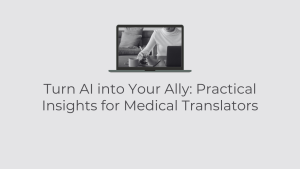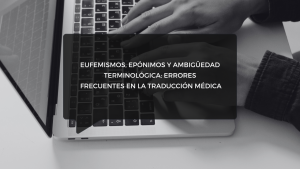In the rapidly evolving landscape of translation technology, staying up to date with the latest tools is essential for professional translators. One tool that has gained attention is Wordscope, a web-based Computer-Assisted Translation (CAT) tool designed to enhance translation efficiency and quality. Developed by Belgian software engineer Philippe Mercier in 2017, Wordscope integrates various AI-powered features to support translators in their work. Some of you may have attended the recent Tremédica webinar where Philippe kindly and clearly demonstrated the tool. For those who are unfamiliar with it, here’s a quick overview.
Wordscope: quick facts and insights from a user
Wordscope supports a wide range of document formats, including Word, Excel, PowerPoint, HTML, InDesign, and SRT (subtitles). This versatility allows translators to work within a single interface while ensuring that the original layout and formatting are preserved throughout the translation process. Setting up a project in Wordscope follows a familiar process for those experienced with other CAT tools: creating a translation memory (TM) and a termbase. However, Wordscope introduces an added feature—the ability to choose AI models to assist in the translation process.
By integrating ChatGPT, Wordscope enables translators to look up definitions and explore scientific concepts simply by selecting a term and clicking the ChatGPT button, which provides definitions and explanations directly within the interface. However, while this feature enables the translator to remain in the CAT environment while performing the searches, it’s important to remember that chatbots like ChatGPT are not search engines and should not be relied upon as authoritative sources. Their responses can be helpful for quick insights, but they always require expert judgment to verify accuracy and relevance. It also helps rephrase sentences and correct grammar, ensuring clarity, adjusting for tone, and refining grammatical accuracy. Additionally, translators can use it to generate translations and contextually appropriate suggestions powered by GPT-4 to compare against their own produced renderings. Another useful feature is the ability to back-translate text as a QA step, which helps verify accuracy when dealing with ambiguous phrases.
Machine translation integration is another key aspect of Wordscope. At the project setup stage, multiple machine translation (MT) engines, such as DeepL, can be compared side by side. This allows translators to boost productivity by leveraging AI-powered translation while maintaining quality and to customize translations by creating client-specific versions of ChatGPT and DeepL, integrating private glossaries to ensure consistency.
Translation memory and terminology management are essential components of Wordscope, contributing to consistency and efficiency. The tool offers private translation memories (TMs) so translators can store and reuse their translations, avoiding redundant work. It also provides private glossaries, which can be created from scratch or uploaded and dynamically updated during translation. These remain private unless explicitly shared in a project. Additionally, Wordscope integrates terminology databases, automatically underlining terms found in official glossaries such as IATE and Termium to assist with accuracy.
To support the final revision process, Wordscope includes built-in quality control and proofreading tools. A comparative revision tool allows translators to check the translated text against the original, identifying potential misinterpretations, omissions, or inconsistencies in style. Automated quality control checks help spot spelling, grammar, punctuation, and style errors, aiding in a more thorough proofreading process.
One feature I find particularly useful is Wordscope’s collaborative and cloud-based capabilities. The platform facilitates teamwork by allowing project sharing and division, meaning even those without expertise in localization management can easily split projects among multiple translators, with shared access to TMs and real-time visibility into team progress. Since it is a fully web-based tool, translators can work from any device (Mac or PC) without needing to install software, making it highly accessible.
Regarding security and confidentiality, Wordscope claims to ensure that private resources are protected and that confidentiality is maintained. Translation memories are shared securely during projects, with customizable access levels to prevent unauthorized downloads.
Wordscope represents a significant advancement in translation technology, integrating AI-powered features to support professional translators. By combining machine translation, terminology management, quality control, and collaboration tools, it provides a comprehensive solution for improving translation efficiency and quality. As our industry continues to evolve, it’s crucial for us as translators to embrace and master AI-driven tools—otherwise, AI will shape the way we work without our input. I’ve been using Wordscope for a while now, and I find it a valuable asset for boosting productivity and assisting with verification and QA steps.For those interested, Wordscope is a subscription-based tool, but a free demo version is available. You can check it out at https://pro.wordscope.com/.




